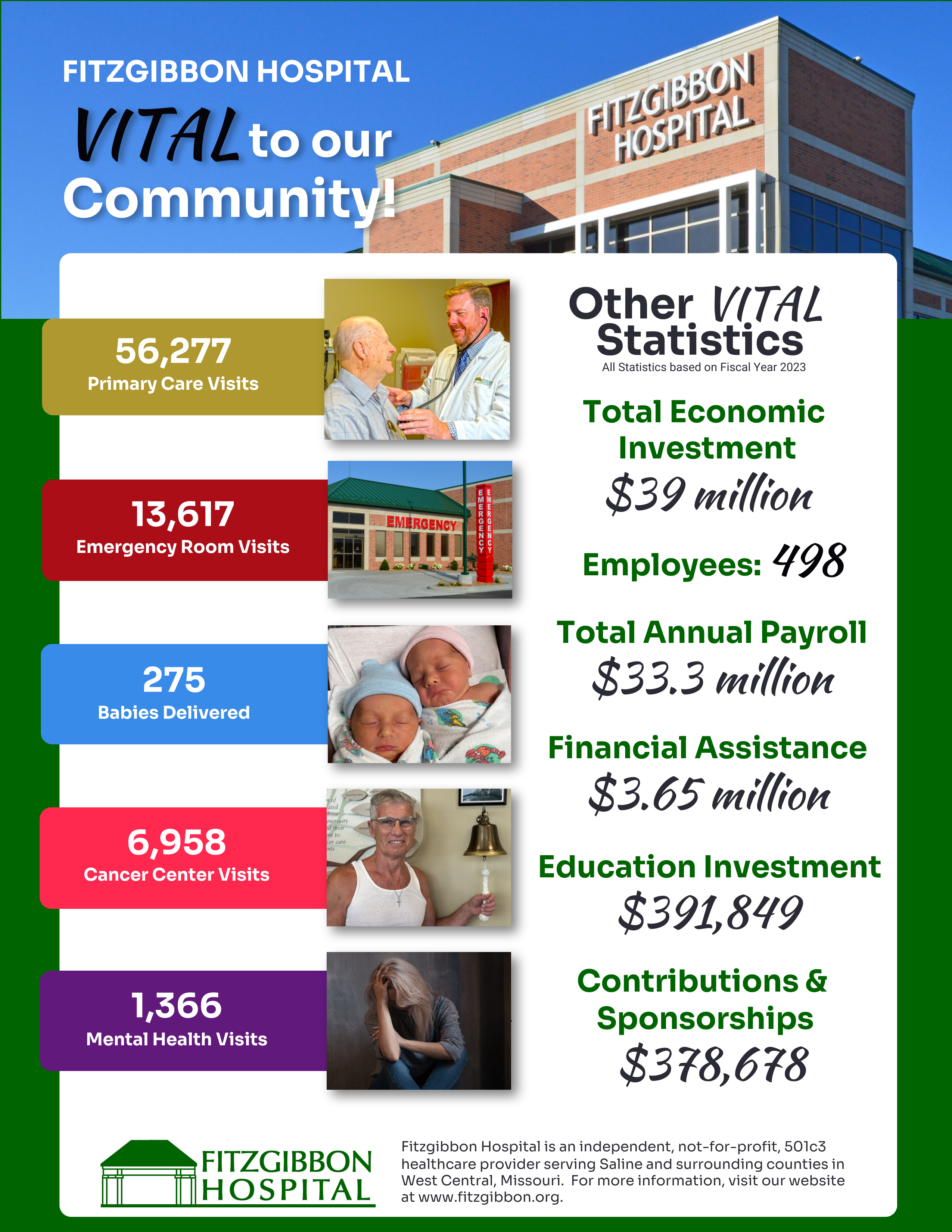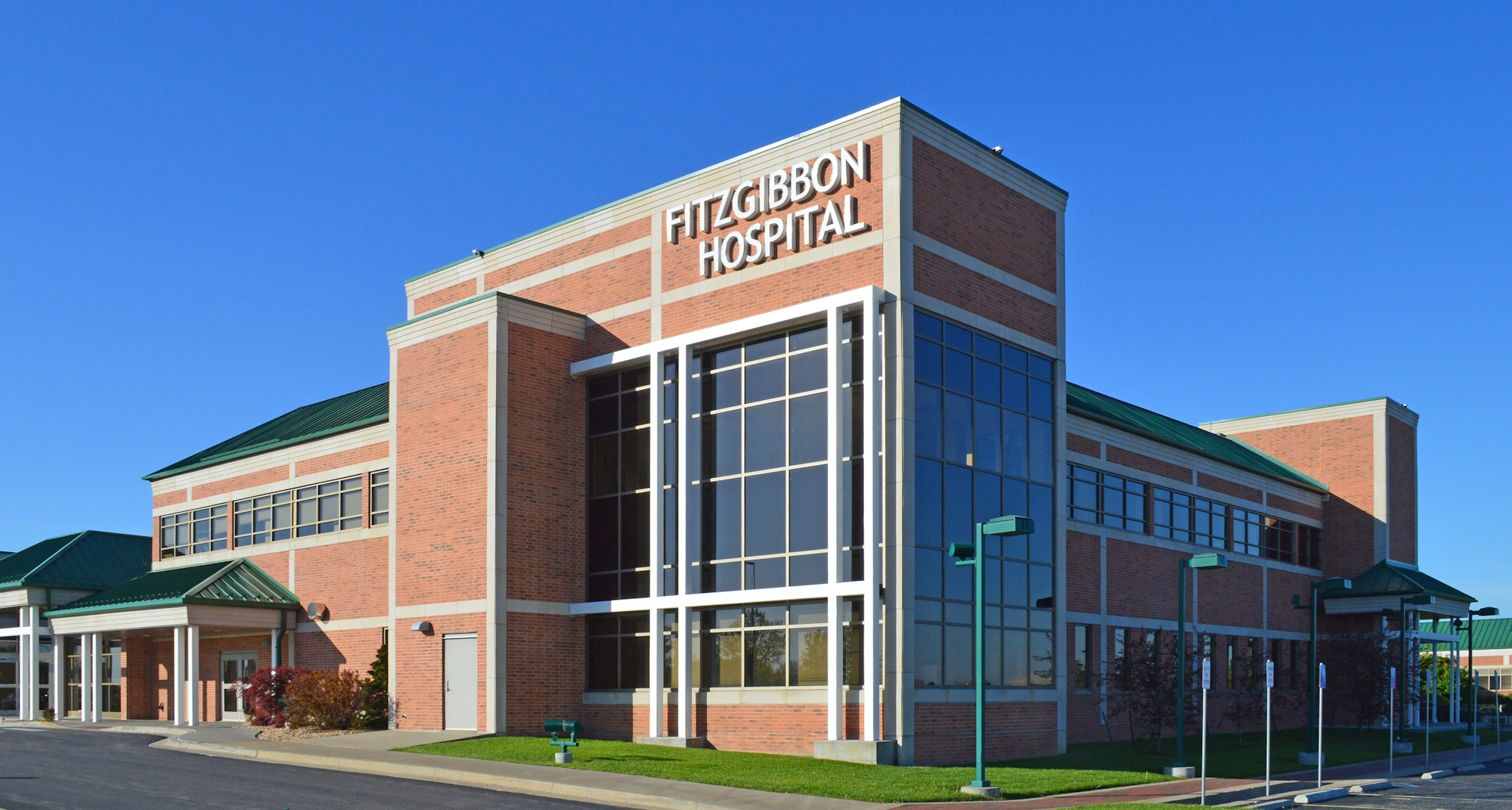Fitzgibbon undertakes financially impactful strategies as rural hospitals continue to face challenges
September 20, 2024

Portions of this article are taken from the Center for Healthcare Quality and Payment Reform, an independent national policy center focused on studying and implementing payment systems that support sustainable, patient-centered care and access to rural hospital care.
What if you or your spouse had an accident and the closest Emergency Room was over 30 minutes away?
What if you or your child were sick and there were no physicians or hospital beds in your community?
What if you were battling cancer and your weekly treatments were over an hour away?
Millions of Americans are facing this situation because rural hospitals are being forced to close. According to a recently released study by the Center for Healthcare Quality and Payment Reform, more than 100 rural hospitals in the United States have closed during the past 10 years, and almost 700 more — nearly one third of all rural hospitals in the country — are at risk of closing in the near future.
That means that even if you have insurance to pay for health care services, there could be nowhere in your community to receive health care and use the insurance. Essential services like maternity care, emergency room treatments, cardiac stabilization and acute mental health services would vanish.
In Missouri, and especially for those living in Saline County, closures in the last five years have been uncomfortably near. They include Audrain Community Hospital in Mexico and Callaway Community Hospital in Fulton, which both closed in 2022; Pinnacle (formerly Cooper County Hospital) in Boonville, which closed in 2020, and I-70 Community Hospital in Sweet Springs, which closed in 2019.
Fitzgibbon Hospital in Marshall has experienced a confluence of circumstances that place it among those rural facilities facing very tough economic headwinds. Its name appears on a list of at-risk hospitals.
“While we kept our doors open, cared for the community and laid off not one individual during Covid-19, the aftermath and inflationary impact of the pandemic has not been good for us,” said Angy Littrell, President and CEO of Fitzgibbon Hospital. “However, we have undertaken a number of cost-cutting measures and continue to explore additional initiatives.”
Studies by the Missouri Hospital Association show that hospitals have faced 17 percent inflation year over year since the pandemic, compared to 8 or 9 percent in the general population. And because Fitzgibbon relies so heavily on governmental payors for its revenues, those revenues are fixed and haven’t been adjusted to keep pace with today’s skyrocketing inflation.
“It’s not like we can increase our ticket price or increase the cost of a hamburger as our input costs rise,” she said. “We are unique in our operational structure in that we are open 24 hours a day, 7 days a week – whether our beds are full of patients or not. And our structure is not set up to flex with the vast economic challenges we have experienced, such as increasing labor costs, supply chain issues, drug shortages and, quite honestly, the unpredictability of patient volumes influenced by things like seasonality, the severity of flu season and consumer choice.”
As a 501(c)3 not-for-profit entity, the majority of revenues Fitzgibbon receives is from payment for the services it provides. A much smaller portion of revenues is derived through the generosity of community members who choose to donate.
Current federal programs like Medicare and Medicaid simply don’t solve the problems facing small rural hospitals, as those payments haven’t risen enough to cover the costs of providing care. Commercial payors are increasingly difficult to work with, deny otherwise medically necessary care due to administrative technicalities or their own internal demographic errors.
According to Littrell, the situation has the hospital looking at a number of solutions, much like the closure of the Intensive Care Unit, which occurred in October 2023.
“That decision saved us about a million dollars a year, due in part, to the complexity of the patients we cared for in the ICU. We have been able to care for the vast majority of those patients in a ‘progressive care bed’ on our medical-surgical unit and have maintained our census at historical levels,” said Littrell.
The hospital continues to look at reduction of expenses via the elimination of temporary or “agency” staff, for whom the hospital pays a hefty premium.
“We’re asking everyone here to do more with less,” said Littrell, adding as an example that clinical leaders in the administrative arm of the hospital often fill in at the bedside in patient care areas.
She added that Fitzgibbon has engaged consultants for guidance and has monitored hospital industry expense benchmarks, including labor compensation for front line staff, leaders, executives and physicians. Next steps include further expense trimming including labor reductions through attrition (not filling positions as employees leave), renegotiation of contracts and evaluating service lines.
“We don’t want to overpay, but we have to be competitive to attract the most competent folks,” said Littrell, “often in specialized fields. It is important for people to understand that we are similar to other rural hospitals that are facing these economic challenges. But we are undertaking a number of initiatives that are the most financially impactful.”
Other strategies on the horizon are the exploration of future partnerships with other healthcare organizations, pivoting medical staff specialties in response to the greatest community need and growing or adding service lines that generate a return on investment for the organization.
“There will be difficult decisions in the days and months ahead, but they are not without thorough examination, thought and planning. The risk of losing the hospital is at stake,” she said.


